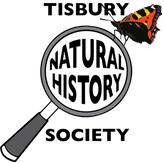|
Andrew Graham explains what's going on:
‘In midsummer the hedgerows are thick with vegetation. Much of this is made up of the shrubs which form its structure but mixed in amongst these are a variety of climbers and scramblers. Some, like honeysuckle, old man’s beard (wild clematis), hops and bindweed (convolvulus) twist their way around the stems of other plants as they climb up them. This process is called circumnutation. 'Some plants twist in a clockwise manner, others anticlockwise. When the stem touches some structure or plant, the cells on the outside of the stem grow longer than those in contact with that structure. This causes the stem to curl and wrap around the support. As the weight of the plant below pulls on the stem tips, they tighten their grip around the support. 'Most often climbers twine around other plants and branches but they will also use man-made objects such as fences or posts. For example, there is splendid hop growing up a telegraph pole and its supporting cable on Hindon Lane near the Beckford - and hops also grow in the hedges along Tisbury Row. Different growing stems of the same plant will also twist around each other, giving mutual support as they grow upwards. 'Sometimes such twisting cables of stems can add several feet to the top of a hedge. As they age, these twisted cords can become strong and create a web of stems though a hedge or thicket. When we see a cloud of old man’s beard seed heads on a hedge in autumn, very often below there will be some thick old stems congesting the base. 'Two other climbers - black bryony and white bryony – largely die back in the autumn, just leaving skeins of red berries. Despite the similar name, these come from different plant families and climb in different directions. The white bryony has tendrils which look like tiny telephone cords. It sends these out to get entangled about nearby supports. The tendrils can then take up the slack to get support while letting the object to which it is attached to move. 'The dog rose scrambles through many a hedge and thicket. Its vicious backward curving thorns are ideal for hooking onto other vegetation as its shoots climb upwards. Like the honeysuckle, the rose can sometimes climb high into trees where, when it finds a patch of light, it can spread out and flower in profusion. 'What all these climbers and scramblers have in common is that they are using other plants or structures to provide them with support so that they do not have to expend resources on building solid trunks and stems which will hold their weight. This allows them to grow very quickly to reach up to the light and rapidly fill gaps.‘ Comments are closed.
|
Photo: Avocets (Izzy Fry)
The headers display photos taken by our members. Do get in touch via the Contact Form if you'd like to submit a photo for selection.
Archives
May 2024
Categories
All
|

 RSS Feed
RSS Feed